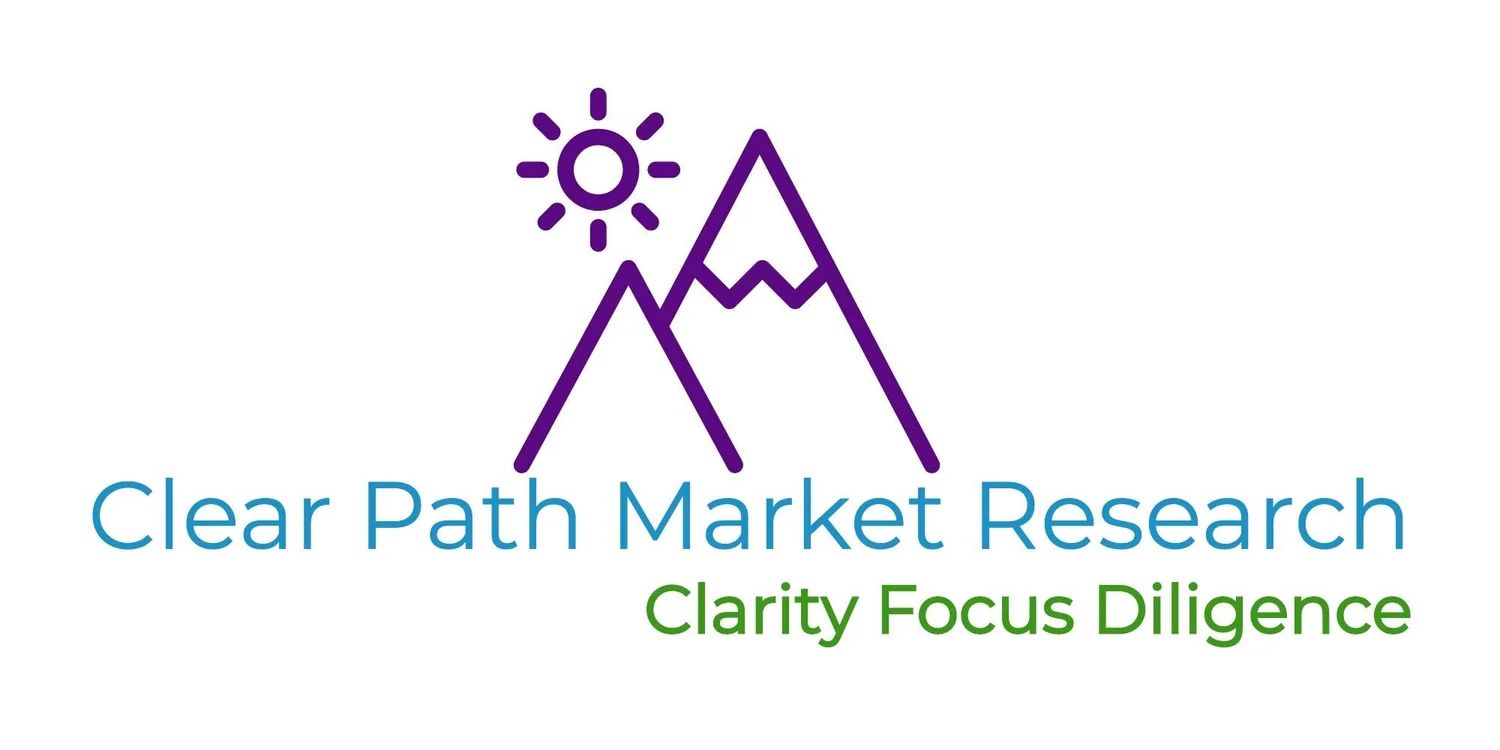What does Clear Path Market Research do?
We help business owners, trade associations, investors, and government entities obtain quantitative answers to questions related to consumer demand and customer preferences.
We can help our clients answer countless questions, but here are some specific examples (written from our clients perspective):
We created a Yoga mat made out of completely organic and renewable materials. It is more durable, yet softer than most mats currently available.
Should we focus our positioning on the “green” materials, or the end benefits of durability and softness?
What share of the market may we be able to acquire?
This product only comes in one color – will this limit our appeal? How much additional sales could we expect from adding a 2nd color?
Our state is considering legalizing cannabis for adults over 21 years of age, and we need to understand how much tax revenue this will generate.
Can you help us estimate the potential size of the cannabis market in our state?
How will different tax rates (8%, 12% or 15%) impact consumer demand?
Should we have a different tax rate for medicinal vs recreational purchases?
We are considering revising our current packaging to keep our product fresher longer and increase the likelihood that consumers recycle our product’s package after use. However, the new packaging materials increase our costs of goods by 7%.
Will the increased shelf life of the product offset the increased cost of the materials?
Will my customers readily notice and appreciate this packaging improvement?
What % of end users currently recycle our product’s package? How much is this likely to increase with the new packaging?
We currently produce 8 flavors of vegan frozen desserts. We would like to expand our same store revenue by 20% in the next year. We have to decide whether we expand flavors, non-dairy bases, product sizes, forms, or change product pricing.
Which strategy by itself produces the greatest revenue gains?
How much additional trial are we likely to generate with 12 flavors instead of just 8? Which flavors offer the greatest incremental reach?
If we add a 2nd non-dairy base, should we prioritize almond milk, hemp milk or a coconut milk base?
Visit Our Services for more information on the type of projects we do.
How are you able to answer those questions?
Fundamentally, estimating demand for products and services depends on asking consumers about their preferences, practices, and attitudes. It can be as simple as asking potential customers:
“What is your favorite flavor of ice cream?”
“How often do you drink beer?”
“Which of these brand names fits best with the service you just read about?”
The expertise comes in knowing:
To whom to ask these questions
Exactly what questions to ask them
Providing consumers with enough information to make an informed choice
Standardizing questions and response choices to enable model building
Benchmarking against known quantities
Cross-checking and integrating primary data with reliable secondary data sources
Knowing the limits of the information you are using
Being aware of the variables that you are not measuring and which may impact future demand
Collaborating effectively with your clients to make sure you are both in agreement on what needs to be measured
Consulting with industry experts to understand currently accepted category parameters
